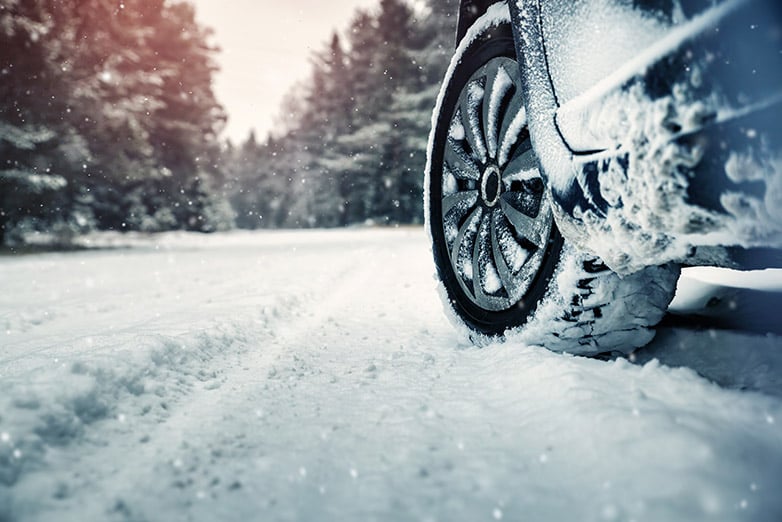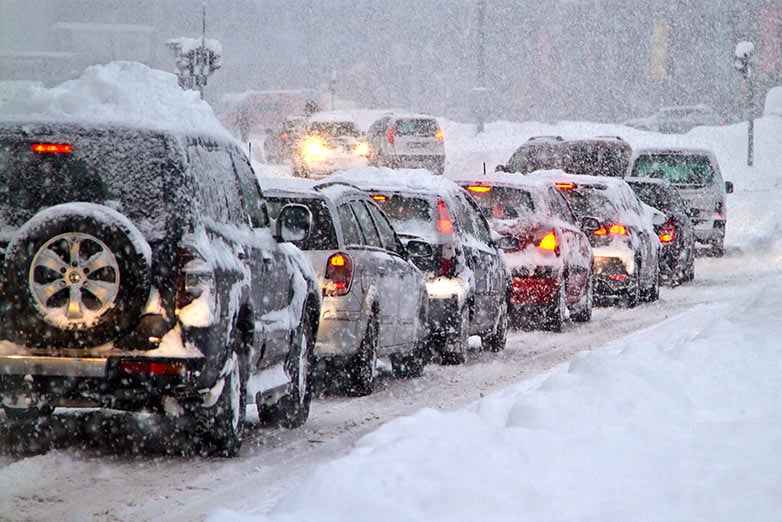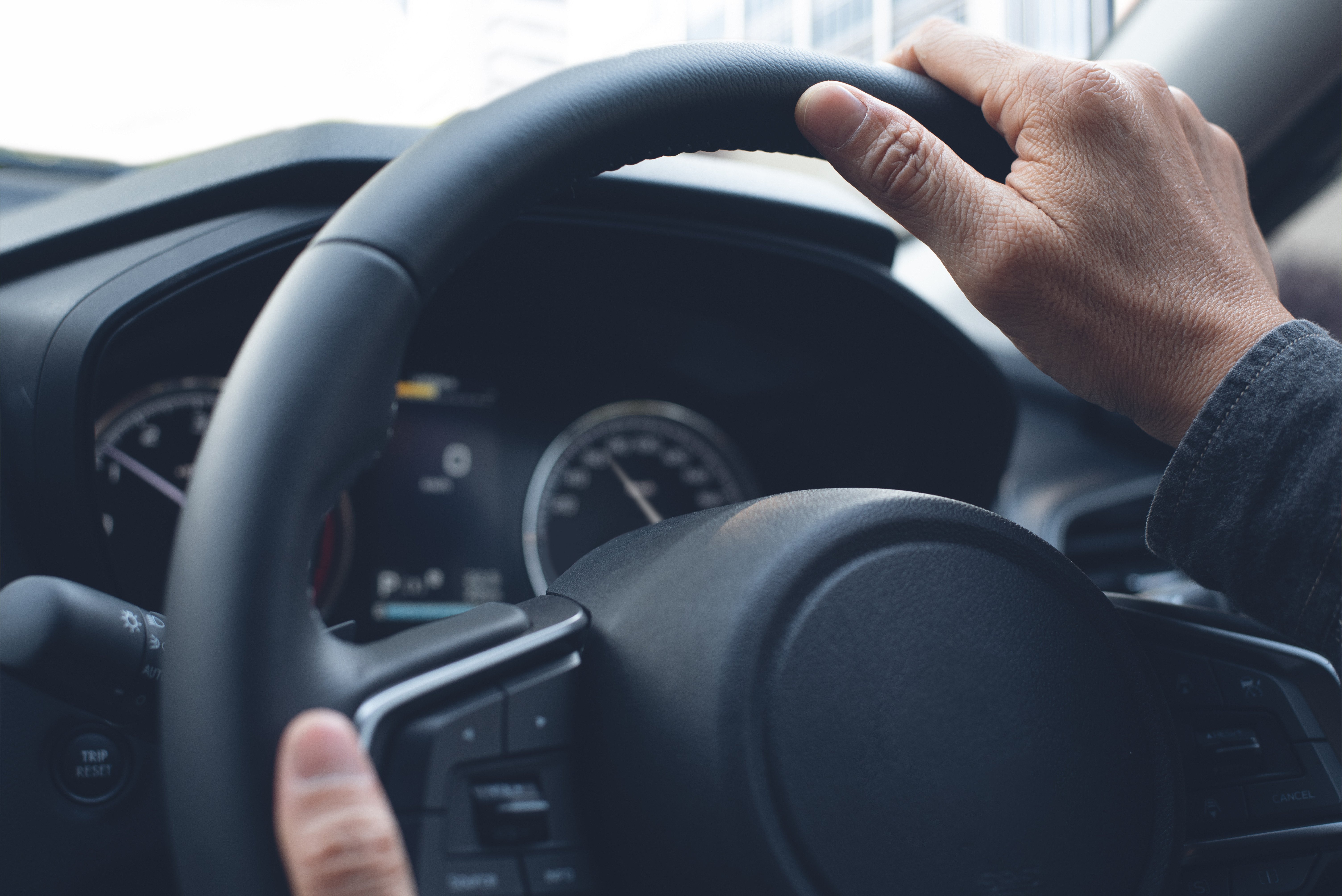
Getting behind the wheel of a vehicle is something that’s never to be taken lightly, but that’s especially true during the winter months. When winter weather goes south, drivers have several factors to deal with in addition to the common safety threats already facing them every day.
Winter brings with it its own unique set of concerns, most notably snow and ice.
Statistics from the U.S. Department of Transportation show that about one-fourth of all weather-related crashes take place on pavement that is snowy or icy, and about 15 percent of crashes happen when snow or sleet is falling.
Knowing how to handle winter driving conditions and learning to adjust your driving habits when the weather takes a wintry turn are key to making it through the season safely.
Making sure that you’re prepared to deal with winter conditions is the first step toward a safer winter.
What Are the Most Common Winter Weather Driving Mistakes?
Here’s a look at five of the top mistakes drivers make in winter driving conditions and what you can do to avoid them.
1. Going Too Fast for the Road Conditions

When bad weather hits, whether that means reduced visibility from fog and rain or slick, icy pavements and snow-covered roads, one of the first things you should do is adjust your speed.
Speed limits aren’t set for the worst road conditions; they’re designed for dry pavement and clear visibility.
If the weather is wet, icy or snowy, ease up on the gas. Going slower may seem frustrating, but it’s safer and a better way to maintain control of your vehicle.
Getting home safely is much faster than ending up in a ditch — or in the hospital.
2. Not Allowing Enough Distance Between Vehicles
Space between vehicles is particularly important in icy conditions or in any situation where you could easily lose traction.
Remember that it will take you longer to slow down or stop in these conditions, not to mention being more difficult to maneuver your car from one lane to another if necessary.
Create space around your vehicle and always look at your position in traffic so you can Leave Yourself an Out®.
Avoid the temptation to tailgate in slow-moving traffic — and remember, if you’re driving too close to the vehicle in front of you, you’re probably focusing on their bumper rather than looking ahead and around at your surroundings to avoid hazards on the road.
At the same time, keep an eye on what’s in your rearview mirror. Rear-end collisions are the most common type of crash that occurs during bad weather.
3. Not Making Yourself Seen
If other vehicles can’t see you, you’re in danger. Keep in mind Key 5. Make Sure They See You®. Turn on your headlights — not just your running lights — to ensure that both your headlights and taillights are clearly visible to those around you.
Use blinkers to give notice of your intention to change lanes or turn, and tap your brakes if you need to send a message to the vehicle behind you that they’re traveling a little too close.
Be particularly cautious at intersections and be mindful of other drivers’ blind spots. If they can’t see you, you aren’t safe.
4. Bundling Up
Yes, that warm, bulky coat keeps you toasty when you’re outside, but once you slide into the driver’s seat, you’re better off without it.
Winter wear like boots, bulky coats, hats and gloves can actually be a liability when you’re behind the wheel.
Big boots make it hard to feel the responsiveness of your brake, clutch and gas pedals, and can even be too wide for your foot to move easily on and off the pedals.
Watch out for soles that are wet from walking in the snow; they can slide off the pedal.
Hats limit your visibility, while a bulky coat may make it difficult to look over your shoulder and limit sight lines.
Finally, a pair of gloves or mittens that are slippery can be hazardous on the wheel. Your best plan is to change into driving shoes and use the heater and seat warmers to keep you warm inside the vehicle.
Leave the boots and bulky outerwear in the back seat.
5. Not Expecting the Unexpected

Winter weather often changes abruptly, and that can lead to everything from getting stuck in traffic with dozens of other cars to ending up in a ditch by yourself.
As the season begins, every driver should load up on winter essentials. Make sure you stow the following in your vehicle:
- An emergency first aid kit
- A warm blanket
- An extra change of warm clothes
- A collapsible shovel
- High-energy snacks
- A water bottle
- Paper towels
- Sand or kitty litter (to provide traction if you get stuck)
- Flares
In addition, you should always have a tow chain and jumper cables in your car, and keep a spare phone charger in the glove box.
Preparing for a Season of Winter Driving
The best way to handle changing seasons and the threats of winter weather is to prepare for them.
Taking time to learn the effects of bad weather and managing your vehicle in it can pay off with a safer experience behind the wheel.
The Smith5Keys® principles are effective in all kinds of weather but can be particularly useful when winter weather strikes.
Following The Smith5Keys in winter weather will help you avoid being stuck, stranded or worse.
Regardless of what type of vehicle you drive, weather can pose a serious threat not only to you but to everyone on the road.
Smith System’s Driving Weather helps drivers learn how to adapt their driving habits to changing weather conditions. Prepare yourself for the worst of winter driving situations using Smith System’s proven methodology.










